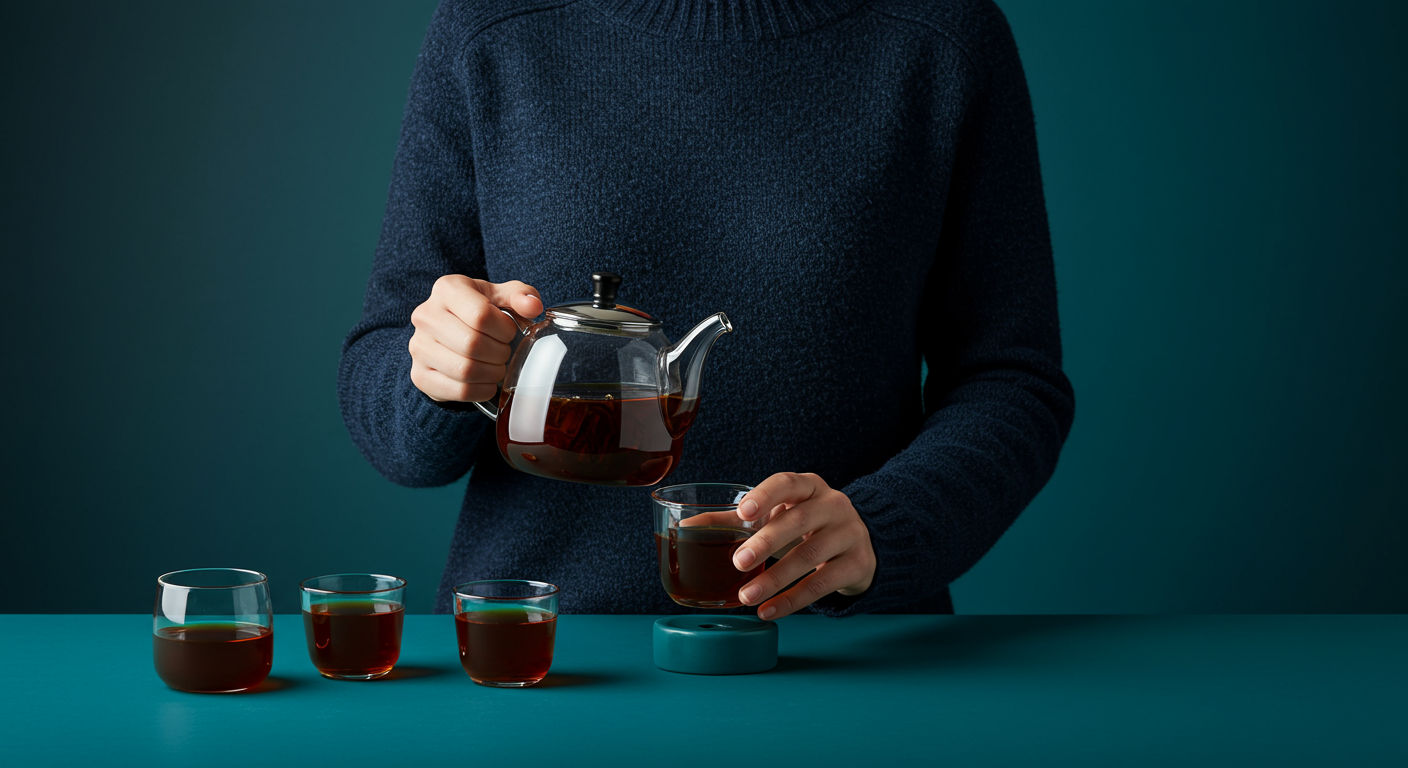Steeping tea isn’t just a routine — it's a ritual that deeply influences the flavor, aroma, and health benefits of your tea. Understanding the science of time and temperature can help you transform an ordinary brew into an extraordinary experience. Whether you're steeping green tea for clarity or chamomile for sleep, this guide walks you through everything you need to know.
What Is Tea Steeping?
Steeping is the process of soaking tea leaves in water to extract flavor, color, and beneficial compounds. It sounds simple, but each variable — leaf type, temperature, duration, water quality — plays a critical role in what ends up in your cup. The word “steep” itself means “to soak,” and in tea culture, it’s synonymous with timing, patience, and technique.
Why Does Steeping Time and Temperature Matter?
Each type of tea contains a unique chemical profile: catechins in green tea, theaflavins in black tea, and essential oils in herbal tisanes. The steeping process determines how much of these compounds are released. Steeping too long can result in astringency and bitterness, while under-steeping may yield a flat, watery brew.
- Green tea: Requires lower temperatures to preserve delicate antioxidants.
- Black tea: Tolerates higher temperatures for bold flavor and caffeine extraction.
- Herbal tea: Needs longer steeping to extract oils and therapeutic compounds.
Tea Steeping Temperature and Time Chart
| Tea Type | Water Temperature (°F) | Steep Time | Notes |
|---|---|---|---|
| White Tea | 160–185 | 1–3 min | Very delicate. Use spring water if possible. |
| Green Tea | 150–180 | 1–3 min | Use cooler water to avoid bitterness. |
| Matcha | 170–180 | Whisked, not steeped | Use bamboo whisk (chasen). |
| Oolong Tea | 185–205 | 3–7 min | Can be steeped multiple times. |
| Black Tea | 200–212 | 3–5 min | Full oxidation requires full heat. |
| Pu-erh Tea | 195–212 | 2–5 min | Ideal for multiple infusions. |
| Herbal Tea | 200–212 | 5–10 min | Longer steeping enhances benefits. |
| Chai Tea | 200–212 | 5–7 min | Can be simmered with milk. |
| Rooibos | 200–212 | 6–8 min | Caffeine-free and rich in antioxidants. |
| Darjeeling | 185–195 | 2–4 min | Considered the "champagne" of teas. |
How to Steep Tea: A Detailed Process
1. Start with Quality Water
The foundation of any good tea is the water. Use filtered or spring water — it should taste clean, with no odors. Avoid distilled water, which lacks minerals that help carry flavor.
2. Measure Your Tea Correctly
Standard: 1 teaspoon of loose tea per 8 oz cup. Stronger taste? Add more leaves, not time.
3. Control the Temperature
Use a thermometer or electric kettle with temperature presets. Overheating can destroy the finer elements of lighter teas.
4. Set a Timer
Timing is everything. Don’t estimate — use a timer for precision, especially with green and white teas.
5. Cover the Cup
This retains steam and ensures full flavor extraction — especially important for chamomile or mint teas where essential oils are key.
6. Strain and Enjoy
Remove the tea leaves or bag immediately to prevent over-extraction. Taste, then adjust for your next cup.
Understanding Cold Steeping
Cold brewing tea involves steeping leaves in cold water for 6 to 12 hours. The result is a smoother, less bitter tea with a light and refreshing taste. It's ideal for summer or those sensitive to tannins.
How Water Quality and Mineral Content Affects Flavor
Good water makes great tea. Soft water is ideal. Hard water, rich in calcium and magnesium, can flatten flavor. A TDS (total dissolved solids) reading of 30–60 ppm is generally considered best for tea brewing.
How Steeping Affects Chemistry and Health Benefits
Proper steeping unlocks catechins, L-theanine, flavonoids, and essential oils. Each compound contributes to specific benefits: focus, calm, digestion, immunity. Over-steeping or wrong temperature can destroy these compounds or make tea too harsh to enjoy.
Common Tea Steeping Myths
-
Myth: The longer you steep, the healthier it is.
Fact: Over-steeping increases bitterness and can reduce drinkability. -
Myth: All teas should be steeped with boiling water.
Fact: Green, white, and yellow teas need cooler temperatures. -
Myth: You can't re-steep tea.
Fact: Many teas (especially oolong and pu-erh) get better with multiple steeps.
Tea Tools That Help You Steep Perfectly
- Electric kettle with temperature control
- Glass or ceramic teapot
- Tea timer (app or manual)
- Infuser basket or teapot with strainer
- Thermometer
Frequently Asked Questions (FAQ)
Can I re-steep tea leaves?
Yes. Especially oolong, pu-erh, and some green teas. Each steeping can offer new flavors.
Should I steep tea covered or uncovered?
Always covered. This retains heat and prevents essential oils from escaping.
Why does my tea taste bitter?
Likely from over-steeping or using water that's too hot. Try reducing steep time or temp.
Is there caffeine in cold brewed tea?
Yes, but slightly less than hot brewed. Cold steeping extracts more slowly and less aggressively.
What’s the best temperature for green tea?
Between 150–180°F. Above 180 can burn the leaves and create bitterness.
Final Thoughts
Brewing tea is simple — but steeping it well is an art. Time, temperature, and attention turn leaves into liquid peace. Whether you’re drinking for flavor, focus, or comfort, this guide helps you brew better tea, one steep at a time.

